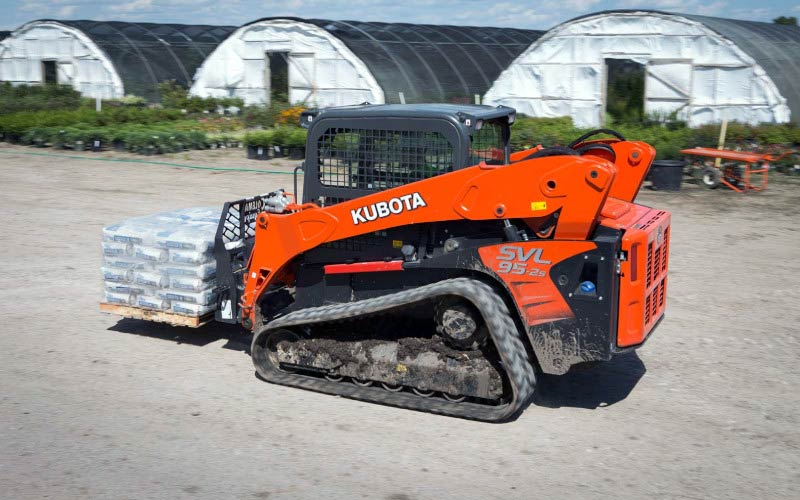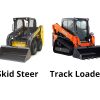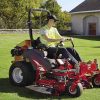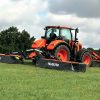Track Loader
Loader arm float function is a standard feature on the Kubota SVL Series Compact Track Loader and we get a lot of questions about what it’s for and how to use it. I’ll try to clear that up for you.
What Is Float Position?
Float position allows you to rest the bucket on the ground without down pressure or lift. With the lift arms in float mode, the attachment follows the contour of the ground without digging in. “Float” simply means you’re not controlling the angle of the bucket or blade.
What Is Float Mode Used For?
Float mode is used in reverse – never with forward motion. If you float your bucket and try to move forward, it is likely to dig into the ground and may result in damage to the bucket and possibly to the float arms.
You can use float mode to level loose materials by dragging a bucket or blade in reverse, using the weight of the implement to compress and even out a pile of gravel or dirt.
Float mode is also useful for moving a pile of loose material stored on a flat, hard surface. Let’s say you have a pile of feed or fertilizer on a cement floor, and you need to move it. Float mode lets you drag a bucket of material without mixing surface material with stockpile material or gouging the floor. This puts less wear on the bucket than exerting down pressure with the hydraulic system and allows the bucket to skim over the contours of the material.
How to Use Float Mode
Be very careful when going into float mode. When operating in float mode on hard surfaces, it’s important to make sure the bucket is level. The bucket should be resting on the ground before you engage float mode. If you float the lift arms while the bucket is raised, the bucket could fall and damage the equipment or hurt someone.
To engage float mode, push the right control lever forward and press and release the float switch located on the right control lever. You’ll see the float mode indicator light on the instrument panel come on, and it will stay on while float mode is on.
To exit float mode, press and release the float switch on the right control lever again, and pull the lever backward. The float mode light on the instrument panel will go off.
The Process
When you’re spreading a lot of material like mulch or dirt, a two-step process makes your work faster and easier. With the bucket low to the ground, you pick up the mulch and make a pile, then float the bucket and drag it backwards to grade the surface evenly without switching implements. The final step of grading is completed during the spreading process, and when that’s done, the job is done.
One word of caution. We’ve seen some bad forum advice about angling the bucket down to grade. Don’t! That’s a great way to damage your equipment. Rest the bucket flat on the ground and it will bump up over rocks or other protrusions without damage.
(Image from: https://www.kubotausa.com/products/construction/track-loaders/svl-series)









